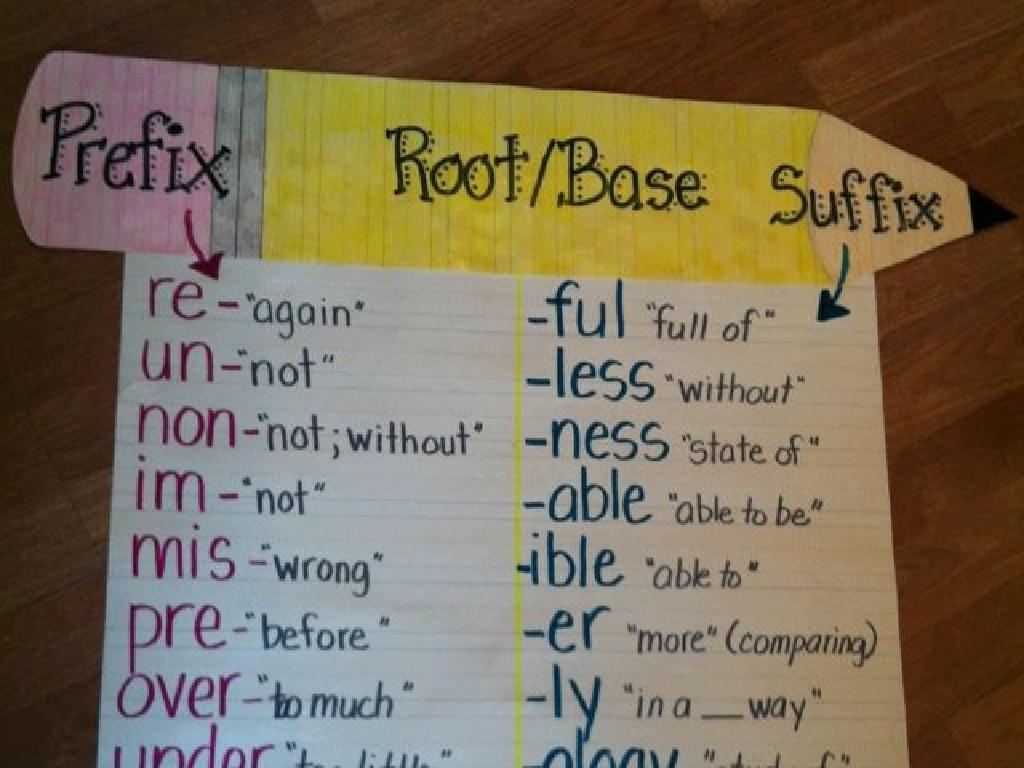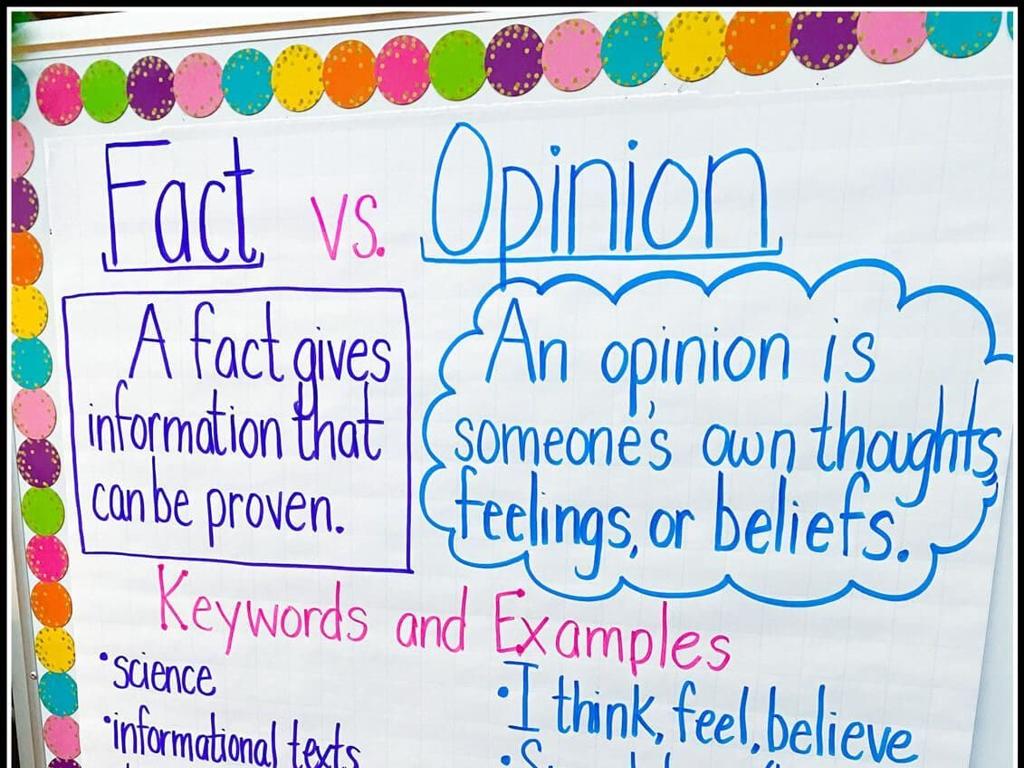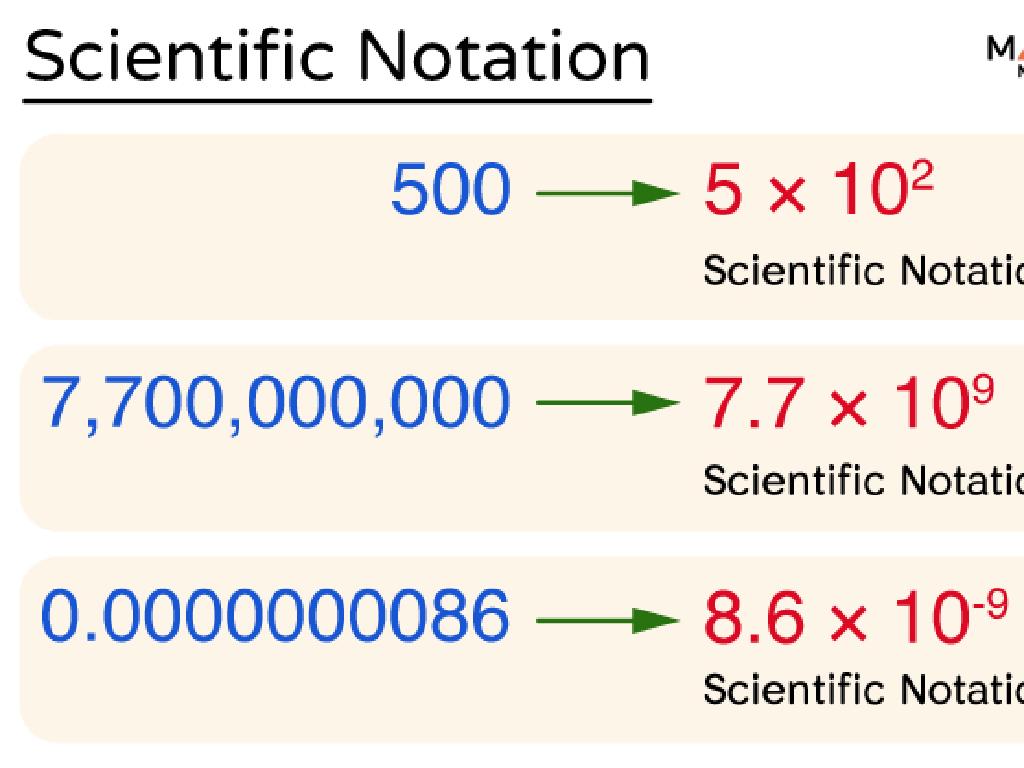Perimeter
Subject: Math
Grade: Seventh grade
Topic: Perimeter And Area
Please LOG IN to download the presentation. Access is available to registered users only.
View More Content
Welcome to Perimeter!
– Perimeter: A boundary measurement
– It’s the total distance around a 2D shape, like the fence around a yard.
– Perimeter’s role in everyday life
– Used in planning spaces like gardens or rooms.
– Today’s lesson: Exploring Perimeter
– We’ll learn how to calculate perimeters of various shapes.
– Engaging activities planned
|
Begin the lesson by explaining the concept of perimeter as the total distance around a two-dimensional shape. Emphasize its practical applications, such as determining the amount of fencing needed for a backyard or the border for a garden. Highlight how understanding perimeter is essential for various real-life situations, including construction and interior design. Today’s lesson will cover the basics of perimeter calculation, including different shapes such as squares, rectangles, and polygons. Engage students with hands-on activities where they measure items in the classroom to calculate perimeter, fostering a deeper understanding of the concept.
Exploring Perimeter
– Perimeter defined
– Perimeter is the boundary length of a 2D shape.
– Total distance around a shape
– Add up the lengths of all sides for shapes like rectangles and polygons.
– Everyday objects with perimeter
– Picture frames, gardens, and tabletops all have perimeters.
– Calculating perimeter
– Use the formula P=2(l+w) for rectangles, or add all sides for irregular shapes.
|
This slide introduces the concept of perimeter as a foundational element in geometry. Perimeter is the total distance around the edge of a two-dimensional shape. To make the concept more tangible, students can relate to everyday objects that have a perimeter, such as the border of a picture frame or the fencing around a garden. Emphasize that calculating the perimeter depends on the shape: for rectangles, use the formula P=2(l+w), where l is length and w is width; for irregular polygons, sum the length of all sides. Encourage students to measure objects around the classroom or at home to practice finding perimeters.
Calculating Perimeter
– Perimeter calculation methods
– Add up all the sides of a shape to find its perimeter
– Formulas for common shapes
– Square: P=4a, Rectangle: P=2(l+w), where P is perimeter, a is side, l is length, and w is width
– Perimeter of squares and rectangles
– For your desk, measure each side and sum them
– Triangle perimeter formula
– Triangle: P=a+b+c, where a, b, and c are the lengths of the sides
|
This slide introduces students to the concept of perimeter as a measure of the total distance around a shape. Start by explaining that perimeter is found by adding the lengths of all sides. Provide the formulas for calculating the perimeter of squares (all sides equal), rectangles (opposite sides equal), and triangles (sum of all sides). For a practical understanding, have students measure their desk to find its perimeter, applying the rectangle formula. This activity will help students grasp the concept of perimeter in a tangible way. Encourage students to practice with different shapes and sizes to reinforce the concept.
Perimeter of Irregular Shapes
– Break down complex shapes
– Divide shapes into rectangles, triangles, etc.
– Add lengths of all sides
– Sum the lengths of each simple shape’s sides
– Class activity: Measure Perimeter
– Calculate Perimeter of cut-outs
– Use rulers to measure cut-out sides
|
This slide introduces the concept of finding the perimeter of irregular shapes by breaking them down into simpler shapes such as rectangles and triangles. Students will learn to add the lengths of all sides to find the total perimeter. The class activity involves hands-on learning where students will measure and calculate the perimeter of pre-prepared irregular shape cut-outs. Provide students with rulers and cut-outs and guide them through the process of breaking down the shapes, measuring each side, and performing the addition. Encourage them to check their work with a partner. Possible variations of the activity could include using string to measure curved edges, comparing perimeters of different shapes with the same area, or finding the perimeter of objects in the classroom.
Perimeter in Real Life
– Calculating fencing for a backyard
– Determine the total length of material for fencing
– Measuring a running track’s length
– Find out the distance covered on the track
– Interactive Q&A on perimeter uses
– Students think of daily life examples where perimeter is used
|
This slide aims to show practical applications of perimeter in everyday life. Start by discussing how to calculate the amount of material needed to fence a backyard by adding up the lengths of all sides. Then, move on to how athletes use perimeter to know the distance they run on a track. For the interactive Q&A, encourage students to come up with their own examples of where they encounter perimeter in their daily lives, such as wrapping a gift, creating a garden bed, or even setting up a game area. This will help them understand the concept of perimeter as a tangible and useful measurement.
Let’s Practice Perimeter Calculations!
– Solve perimeter problems for shapes
– Pair up and work collaboratively
– Choose a partner and tackle various shapes together
– Discuss your solutions with peers
– Explain how you got your answers
– Present your findings to the class
– Share different methods used in finding perimeters
|
This slide is designed to engage students in a hands-on activity to reinforce their understanding of how to calculate the perimeter of various shapes. Students should be encouraged to work in pairs to foster collaborative problem-solving skills. Provide a set of practice problems that include different shapes such as rectangles, squares, triangles, and polygons. Encourage students to discuss their problem-solving strategies with their partner and to be ready to share their answers and methods with the class. This will help them learn from each other and gain confidence in their ability to solve perimeter problems. Possible activities could include measuring objects in the classroom, creating shapes with string, or drawing shapes on graph paper to calculate their perimeters.
Class Activity: Perimeter Scavenger Hunt
– Find classroom objects to measure
– Calculate each object’s Perimeter
– Use a ruler to measure sides and add them up
– Record findings on the activity sheet
– Ensure measurements are noted accurately
– Discuss the role of Perimeter
– How does knowing the Perimeter relate to the object’s size?
|
This interactive activity is designed to help students apply their knowledge of Perimeter in a practical setting. Students will search for various objects around the classroom, such as books, desks, or windows, and use a ruler or measuring tape to calculate the Perimeter by adding the lengths of all sides. They should record their measurements on the provided activity sheet. After the scavenger hunt, facilitate a discussion on how the Perimeter can give insights into the size and shape of an object. This will deepen their understanding of Perimeter as a concept and its real-world applications. Possible variations of the activity could include measuring items of different shapes, working in pairs, or challenging students to find the object with the largest or smallest Perimeter.
Perimeter Recap & Introduction to Area
– Review of perimeter concepts
– Perimeter is the total distance around a shape.
– Emphasize measurement accuracy
– Accurate measurements ensure correct perimeter calculations.
– Preview next lesson: Area
– Area measures the surface within a boundary.
– Connection between perimeter and area
– Understanding perimeter lays the foundation for learning about area.
|
This slide aims to consolidate the students’ understanding of perimeter before moving on to the concept of area. Begin by reviewing the definition of perimeter and the methods used to calculate it for different shapes. Stress the importance of precise measurements, as small errors can lead to incorrect results. Introduce the next lesson on area, explaining that it is a related but distinct concept, focusing on the space inside a shape rather than the length around it. Highlight how mastering perimeter will aid in understanding area calculations. Prepare students for the transition by discussing how both concepts are essential in real-life applications such as construction and interior design.
Homework: Mastering Perimeter
– Complete the perimeter worksheet
– Practice with different shapes
– Measure objects at home
– Use a ruler or tape measure for accuracy
– Calculate home objects’ perimeter
– Add up all the sides’ lengths
– Study for the perimeter quiz
|
This homework assignment is designed to reinforce the concept of perimeter learned in class. The worksheet will provide practice with a variety of shapes, ensuring students understand how to apply the formula for perimeter in different contexts. Encourage students to find objects at home like picture frames or tabletops to measure and calculate the perimeter, which will help them relate the concept to real-life objects. Remind them to use a ruler or tape measure for accuracy and to add up the lengths of all sides. Lastly, inform students that there will be a quiz on perimeter in the next class to motivate them to study the concept thoroughly. Provide some tips on how to study for the quiz, such as reviewing class notes, re-doing classwork examples, and ensuring they can explain the process of finding the perimeter.





